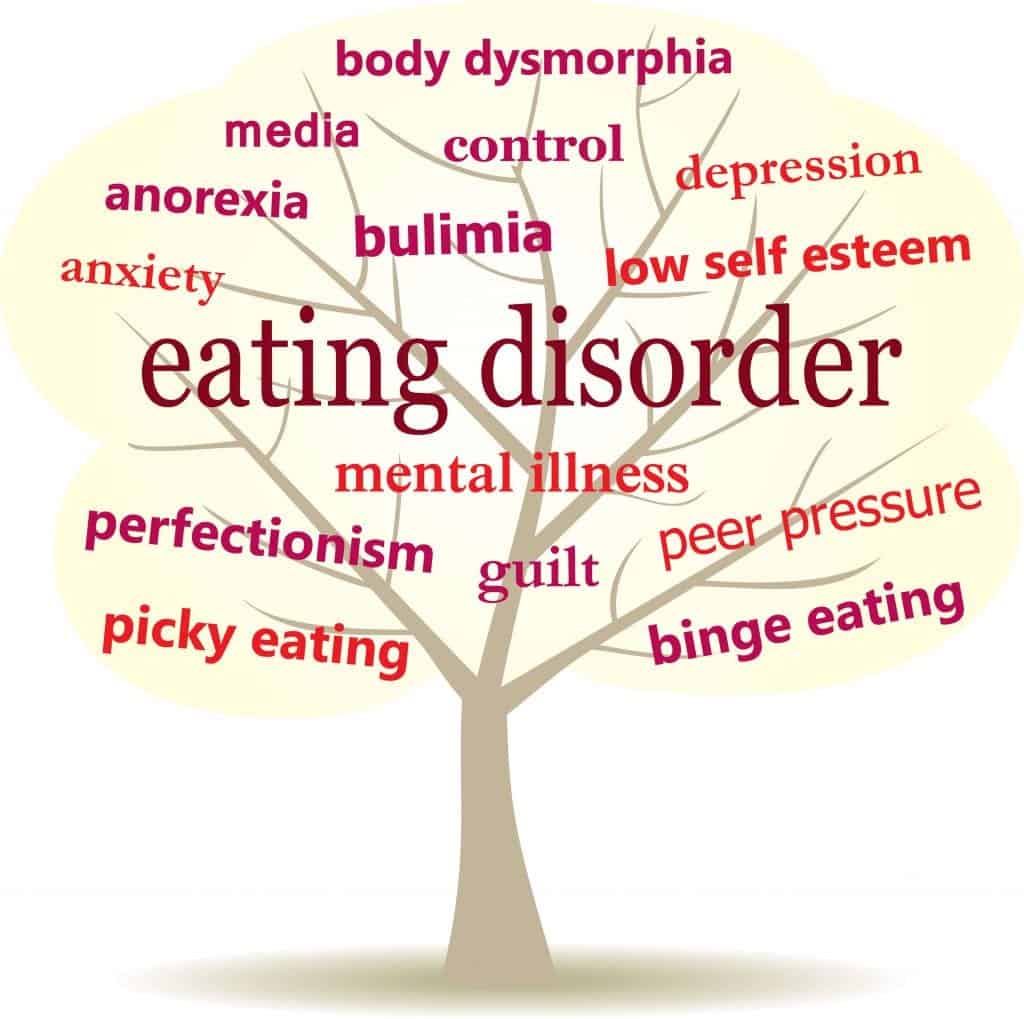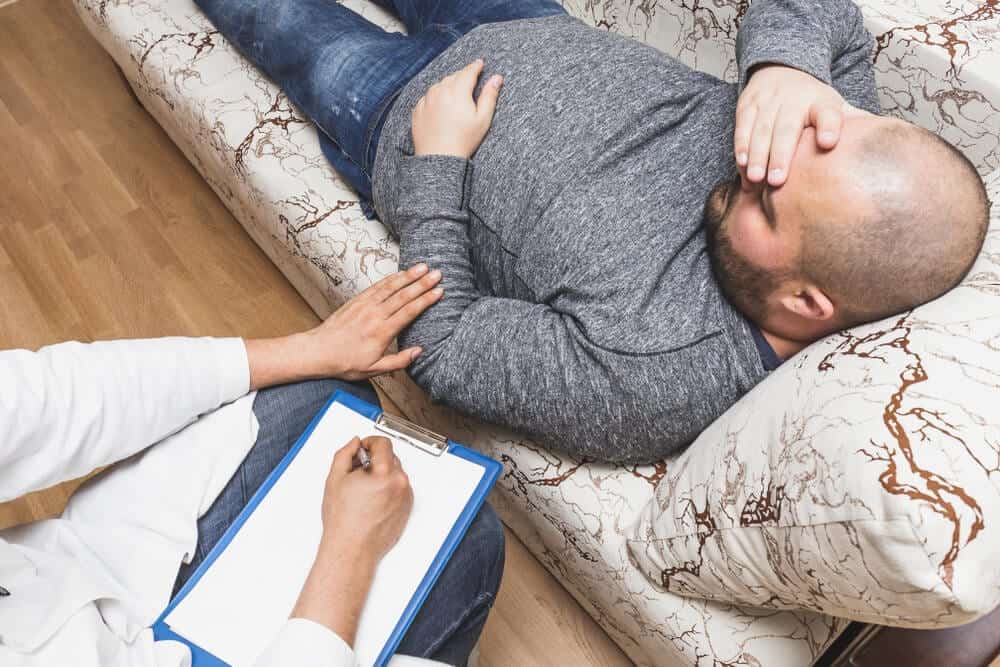Recognizing Binge Eating Battles
We can all relate to the feeling of over-indulging in our favorite snacks — but what happens when over-indulging becomes severe and even life-threatening? Binge eating disorder (BED) is one of the newest eating disorders recognized in the DSM-V, according to the National Eating Disorder Association. It’s also the most common eating disorder in the United States!
Those who suffer from BED experience periods of extreme binge-eating that negatively impact their confidence and self-esteem. If you suspect you or someone you love may be suffering from binge eating disorder, it can feel overwhelming — and even impossible — to figure out where to start. This guide will teach you how to recognize a loved one’s battle with binge eating disorder, and what you can do to help.
What is binge eating disorder (BED)?
Binge eating disorder more than complicates life: for those who suffer from it, BED can become all-consuming. To qualify for a diagnosis of BED, one must have at least one episode of binge eating once a week for three months or more.
An episode of binge eating, or “binge” for short, can be defined according to two criteria: firstly, the patient must consume an unusually large amount of food (i.e. more than most people would typically consume in that period of time) within any two-hour period. The patient must also feel a lack of control over their behavior, perceiving that they could not stop eating or control how much they were eating even if they wanted to.
During these binges, the patient must suffer from three or more of the following symptoms: eating more rapidly than usual, eating until uncomfortably full, eating large amounts of food when not physically hungry, eating alone (typically out of embarrassment for how much food one is eating) and/or feeling disgusted with oneself, depressed or very guilty after binge eating.
These binges must also cause the person severe distress — which is what distinguishes clinically significant disorders from ordinary problematic behavior.
What binge eating disorder isn’t….
We often make assumptions about people we don’t know, and even people we know well — yet we cannot know what someone else is going through without understanding who they are or what they’ve been through. It’s important to recognize some of the assumptions we might make about patients with binge eating disorder, so that we don’t mistakenly see a disorder that isn’t there (or vice-versa).
In particular, you should note that BED is not defined by a patient’s weight. A patient with BED may be skinny or fat — and their BMI may indicate that they are overweight, normal weight or even underweight.
You should never make assumptions about a person’s mental health based on their physical appearance, nor should a medical professional. Unfortunately, weight stigma runs rampant in our society. In the treatment of BED, it’s important to find a doctor who practices health at every size (HAES) and will measure progress based on how you feel, not the numbers they see on the scale.
BED vs. Other Eating Disorders
Even if you haven’t heard of BED, you’re likely aware of several other common eating disorders. The two most people know about? Anorexia nervosa and bulimia nervosa. Here’s how you can distinguish BED from these common eating disorders — and how to tell which disorder you or a loved one may be suffering from.
Anorexia Nervosa and BED
Unlike binge eating disorder, anorexia nervosa is characterized by an avoidance of eating. Rather than over-indulging, patients with anorexia nervosa suffer from distorted body image and restrict their caloric intake to achieve an ‘ideal weight.’ The catch? Most patients with anorexia nervosa will never find the perfect weight. Instead, they’ll raise their standards in the relentless pursuit of thinness — often until it threatens their lives.
Unlike in BED, the DSM-V requires a low BMI for a diagnosis of anorexia nervosa. However, it’s important to note that eating disorders can have many looks, and that someone’s weight cannot wholly predict whether or not they suffer from anorexia nervosa. If a person experiences symptoms of anorexia nervosa, yet is not severely underweight, that person may be diagnosed with atypical anorexia, a form of the generic Eating Disorder Not Otherwise Specified (EDNOS) diagnosis.
Bulimia and BED
On paper, bulimia and binge eating disorder bear many striking similarities. Patients with bulimia may also suffer from episodes of binge eating that drastically affect their confidence and self-esteem. But unlike patients with BED, patients with bulimia attempt to compensate for their binge-eating using methods of restriction, such as controlling their caloric intake, vomiting up their food, abusing laxatives or over-exercising to ‘burn off’ what they ate the night before.
Like patients with BED, patients with bulimia can fall into any weight category according to the DSM-V diagnostic criteria. While healthcare professionals frequently stereotype eating disorder patients as skinny white women, bulimia, BED and other eating disorders are on the rise among other populations, such as overweight and obese people; men, transgender, and non-binary folk and people of color.
Orthorexia and BED
Although not formally recognized in the DSM-V (although therapists may treat this disorder under the general diagnosis of EDNOS), more and more members of the news media have been talking about orthorexia in recent years. I myself suffered from orthorexia in high school and college, and continue to struggle with my relationship with food as a result!
The term ‘orthorexia,’ according to the National Eating Disorders Association, was coined in 1998 to describe an extreme and harmful obsession with healthy eating. Patients with orthorexia may compulsively check nutrition labels for ‘bad’ ingredients, cut out broad categories of food (such as animal products, carbohydrates or fats) and experience high levels of distress when ‘safe’ or ‘healthy’ foods aren’t available to them.
Unlike patients with orthorexia, patients with BED generally don’t concern themselves with the healthfulness of the food they’re eating — especially not during a binge. That isn’t to say that BED can’t coexist with other disorders that cause restrictive or fearful eating patterns, but BED alone doesn’t cause a preoccupation with what a person is eating, so much as a lack of control over how much food is consumed during a binge.
How to Recognize BED

Eating disorders like BED can go silent for many years. If you suspect you or someone you love may be suffering from BED, don’t wait to act. Binge eating disorder can become dangerous, and even fatal, when gone untreated for far too long. Here’s how to recognize if you or someone you love may be suffering from binge eating disorder.
Signs & Symptoms of BED
Mental health professionals use the DSM-V criteria mentioned previously to make an official diagnosis of BED. However, the DSM-V does not capture every symptom of binge eating disorder. Here are some signs to watch out for if you suspect you or someone you love may be suffering from BED:
- Evidence of binge eating, such as
lots of empty wrappers or containers, or disappearance of large amounts of food
in a short amount of time - Hoarding of food in strange places
or secrecy around eating - Fear of eating in public or around
other people - Withdrawal from friends and
activities - Feelings of low self-esteem and/or
extreme concern with weight, body and/or appearance
Co-Occurring Disorders
Patients with psychological disorders frequently present with more than one diagnosis. Someone with binge eating disorder may also show signs of another disorder, such as:
- Mood disorders, like major depression and bipolar disorder. In one study, 54% of patients with binge eating disorder also showed evidence of a mood disorder. Look out for extremely high or low mood, fatigue and exhaustion, social withdrawal and changes in eating or sleeping patterns.
- Anxiety disorders. In the same study, 37% of patients with BED also suffered from co-occurring anxiety. Symptoms of an anxiety disorder include excessive worry, avoidance of places or activities, inability to sit still and sleep disruptions.
- Substance use disorder. 1 in 4 patients with BED also had a co-occurring substance use disorder. Substance use disorder encompasses the abuse of alcohol and drugs, as well as gambling .
Risk Factors for BED
It’s important to remember that binge eating disorder can strike anyone at any time — there is no one ‘look’ for a patient with BED. That being said, certain risk factors make a person more likely to suffer from binge eating disorder (though they do not guarantee a person will or will not develop it). Some of those risk factors include:
- Adverse childhood experiences. Our experiences shape who we are — and negative experiences in childhood can predispose us to develop psychological disorders. Sexual and physical trauma, emotional abuse and neglect and other negative situations in the home can cause children to cope in unhealthy ways. In BED, that may lead to the use of food as medicine.
- Bullying about weight. One study of risk factors for binge eating disorder found that patients with BED were more likely to have endured negative comments about their weight, shape or appearance in childhood.
- Vulnerability to obesity. The same study found that the development of binge eating disorder is associated with some of the same risk factors like obesity. When compared with patients who developed bulimia, patients with BED did not experience more vulnerability to pronounced obesity but were more likely to be obese in childhood.
- Fascination with dieting. A history of dieting or significant weight changes could put a person at risk for binge eating disorder. The Binge Eating Disorder Association found that 30 to 40% of people looking into weight loss treatments could suffer from BED.
Getting Help for BED
Binge eating disorder is a serious, sometimes life-threatening condition — but you don’t have to go through it alone. If you or someone you love is suffering from binge eating disorder, here are some of the ways to find help for this severe illness at a facility like The Meadowglade.
How is Binge Eating Disorder Treated?
Gone untreated, binge eating disorder kills. Without proper treatment, BED can lead to medical complications related to obesity, psychiatric comorbidity, reduced quality of life and impaired social functioning. Below, we explain common treatments for binge eating disorder in greater detail.
Cognitive Behavioral Therapy (CBT)
Cognitive Behavioral Therapy, or CBT, is a mode of therapy based on the belief that our thoughts impact how we feel about ourselves, and our feelings impact our behavior. CBT is the main treatment for binge eating disorder. In CBT, the therapist instructs the patient on how to restructure their negative thought processes to better support recovery. This can include changing negative thoughts about weight, self-worth and relationship with food.
Dialectical Behavioral Therapy (DBT)
Another type of therapy used to treat binge eating disorder is Dialectical Behavioral Therapy (DBT). According to the National Eating Disorders Association, DBT combines principles of CBT with principles of mindfulness derived from Zen Buddhism. The DBT framework helps teach patients to tolerate distressing emotions without using harmful coping strategies — such as binge eating.
Medications for Binge Eating Disorder
When used in coordination with therapy and self-care, medication can be an effective part of a treatment regime for binge eating disorder. Medications approved to treat BED include lisdexamfetamine (a medication used to treat ADHD as well as BED), topiramate (an anti-seizure drug) and selective serotonin reuptake inhibitors (SSRIs) like fluoxetine (Prozac), sertraline (Zoloft) and escitalopram (Lexapro).
However, here at The Meadowglade, we do not suggest medication as one of the steps on the road to recovery from Binge Eating Disorder.
If you or someone you love is struggling with binge eating disorder, starting the road to recovery can feel challenging — and, at times, impossible. Reach out to the capable staff here at The Meadowglade to find out how we can help you or a loved one manage their Binge Eating Disorder and make long strides on the road to recovery.

